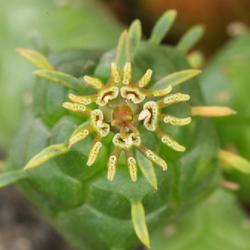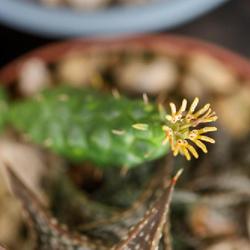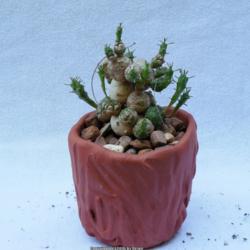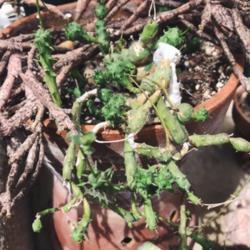| Plant Habit: | Cactus/Succulent |
| Life cycle: | Perennial |
| Sun Requirements: | Full Sun to Partial Shade Partial or Dappled Shade |
| Water Preferences: | Mesic Dry Mesic |
| Soil pH Preferences: | Slightly acid (6.1 – 6.5) Neutral (6.6 – 7.3) Slightly alkaline (7.4 – 7.8) |
| Minimum cold hardiness: | Zone 9b -3.9 °C (25 °F) to -1.1 °C (30 °F) |
| Plant Height: | 4 to 6 inches |
| Plant Spread: | Clump forming to 12 inches |
| Flowers: | Inconspicuous Other: In the genus Euphorbia, the flowers are reduced in size and aggregated into a cluster of flowers called a cyathium (plural cyathia). This feature is present in every species of the genus Euphorbia but nowhere else in the plant kingdom. |
| Flower Color: | Green Other: Greenish yellow |
| Bloom Size: | Under 1" |
| Flower Time: | Spring Summer |
| Suitable Locations: | Xeriscapic Houseplant |
| Dynamic Accumulator: | B (Boron) |
| Resistances: | Drought tolerant |
| Toxicity: | Other: All members of the genus Euphorbia produce a milky sap called latex that is toxic and can range from a mild irritant to very poisonous. |
| Propagation: Other methods: | Cuttings: Stem |
| Containers: | Needs excellent drainage in pots |







« Add a new plant to the database
» Search the Euphorbias Database: by characteristics or by cultivar name
« See the general plant entry for Euphorbias (Euphorbia)